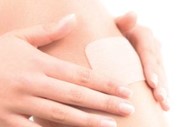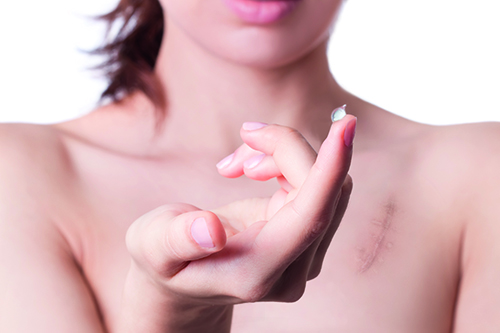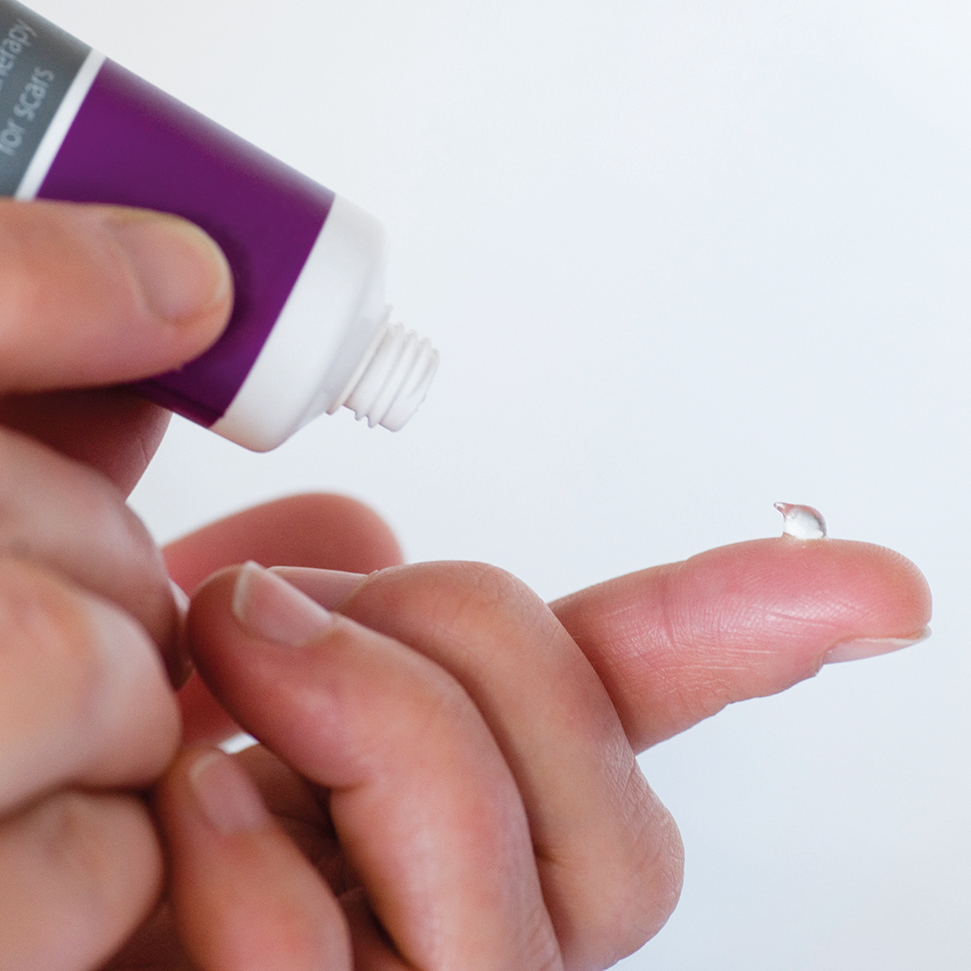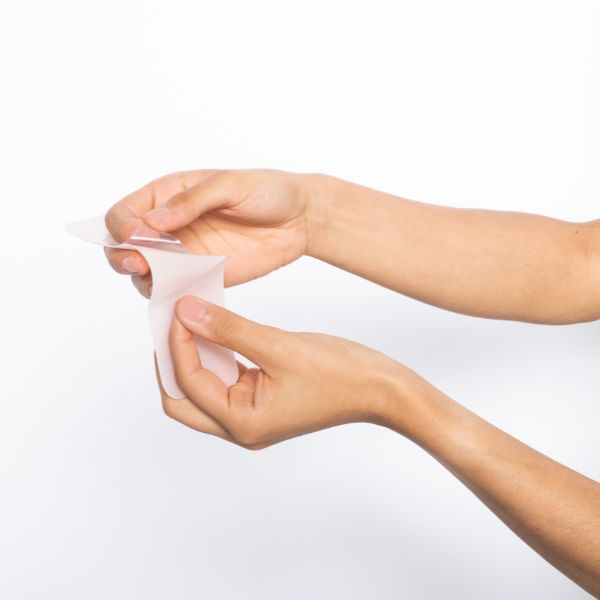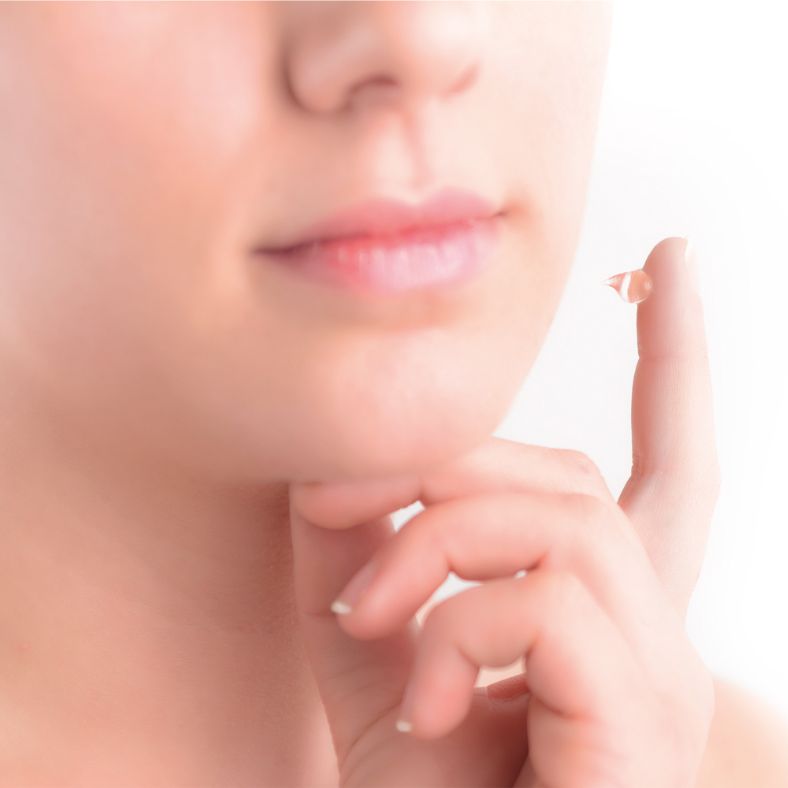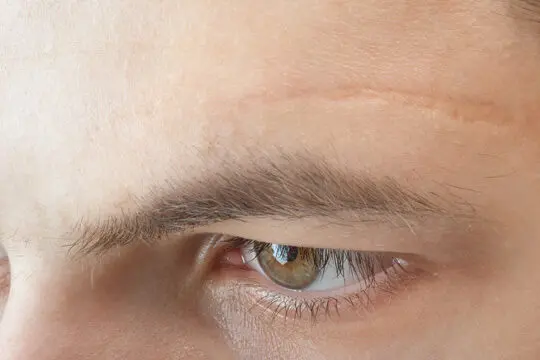How to care for your scar after stitching? Here's the best tips!

Are you caring for your scar after stitching? Here's the best tips!
Suppose you have undergone surgery, where your wound had to be stitched. After the stitches are removed, the wound remains and often a scar remains. In this blog, we explain how to optimally care for your wound and scar after stitching so that you have minimal complaints.
Caring for a sutured wound
Caring for your wound after it has been stitched is important to prevent infection and promote healing. It can also affect the quality of the scar that remains after the stitches are removed.
The first 24-48 hours after the stitching
Immediately after the stitching (the first 24-48 hours) it is important to keep your wound and stitches dry and clean. Dirt can cause inflammation and delay healing.
If there is still fluid or blood coming from your wound after it has been stitched, you can use a plaster or gauze bandage. This also helps to protect your wound and stitches from bumps. Change the plaster or bandage daily as soon as it becomes wet or dirty. The moment when the plaster or bandage can be permanently removed is best discussed with the attending physician or dermatologist.
It is important not to put any tension on your wound. If the stitch is in a place that can bend (such as your knee, elbow, or back), try to move it as little as possible. Therefore, avoid strenuous activities.
After the first 24-48 hours
After the first 24-48 hours have passed, you can gently wash your wound with mild soap and water. Dry your wound gently with a clean cloth by dabbing, not rubbing.
Watch for signs of infection such as redness, swelling, warmth, pus, or increasing pain. If you notice these symptoms, contact your doctor. And of course, don't pick or pull at your stitches.
After 1 or 2 weeks: removal of stitches
Stitches are usually removed after 1 to 2 weeks, depending on the location of your wound and how quickly it heals. Once the stitches are removed, you can resume normal activities.
The influence of sutures on scar formation
A wound that has been stitched, for example after an operation, may heal differently than, for example, a cut from an accident. And can therefore also produce a completely different scar. What factors influence this?
First of all, stitches help close your wound properly. It promotes healing and reduces tension in your wound. This can reduce the risk of hypertrophic scarring. By holding the wound edges together properly, stitches can ensure even healing and leave a neater scar.
But stitching also requires skill and precision. If stitches are too tight, they can restrict blood flow and impede healing. This in turn contributes to scarring.
Stitches can also irritate and, if not cared for properly, lead to infection. This increases the chance of hypertrophic scars.
In short, a suture can have both a positive and a negative effect on the outcome of your scar.
To minimize the negative effects, it is extra important that you take good care of the scar.
Caring for your scar after stitching
After the stitches are removed or after they have dissolved (sometimes dissolvable stitches are used on wounds), your skin continues to actively heal the wound. This process forms scar tissue in and around your wound.
A scar is a more vulnerable part of the skin than 'normal' skin. It loses more moisture. By protecting your scar and giving it extra care, it heals better. You experience fewer complaints and it gives a better result. This is especially important in the first 3 to 6 months after your wound has closed.
Unfortunately, it is not possible to completely prevent a scar after a stitch. However, with the tips below you can significantly improve the result.
We discuss what exactly you need to take into account when caring for a scar after the stitches have been removed and the wound has closed.
- Protect your scar from the sun. This is particularly important in the first 6 weeks. The skin around your scar is new and vulnerable and cannot yet properly block sunlight. Exposure to the sun can then lead to hyperpigmentation more quickly. This means that your scar can become darker than the surrounding skin. In addition, newly formed skin can increase the risk of sunburn and further skin damage. Do you decide to go into the sun with your scar? Then use sunscreen with a strength of at least SPF-30. Tip: ALHYDRAN SPF-30 is a sunscreen with SPF-30. It protects against UVA and UVB radiation and has been specially developed for sensitive skin. An ideal sunscreen for a fresh scar.
- Protect your scar from infections/inflammations. You can do this by keeping it clean and/or covering it, for example with sterile gauze or bandages. Always discuss this with your GP. They can give you the right instructions.
- Try to prevent extra moisture loss. For this, you use silicone products, such as a silicone gel or a silicone patch.
You can read more about the use of silicone gel and scar plasters in the next paragraph.
Caring for a scar with silicone plasters or silicone gel
Silicone patches or silicone gel provide a special protective layer on the scar skin. This layer ensures that the moisture balance remains the same as with 'normal' skin. Moisture loss is therefore minimized. Your scar can heal better as a result.
Please note! A treatment using silicone therapy is useful as long as the scar is still bright red in colour. This means that your scar is still active. An active scar is still in the healing phase and is changing. In addition, you still have an influence on the suppleness of your scar in this phase. You can read about these complaints in the next paragraph.
Which scar complaints are reduced by silicone therapy?
Applying silicone therapy to an active scar can help with various scar complaints such as:
- Itching
- Pain
- A pulling sensation on your scar
- Dryness
- Redness
The above scar complaints can also indicate the development of an abnormal scar, such as a hypertrophic or keloid scar. Are you unsure whether this is the case? Then contact your GP or medical specialist.
Silicone products can be suitable for use in the recovery of a hypertrophic or keloid scar, just like with a normal scar. However, additional treatment may be necessary. Always discuss the treatment options with your doctor.
About the Author

Topics
- Scarban
- Scarban
- Dermasilk
- Eczema
- Alhydran
- Therapeutic clothing
- BAPScarCare
- Sensitive Skin
- Eczema clothing
- Itching
- Varicose eczema
- Dermasilk wash and care instructions
- Jock itch
- Menopause
- Chemotherapy
- Clinical studies
- Size guide
- DermaTherapy bedding
- Night sweats
- Bedsores
- Insomnia
- Night Terrors
- Recovery
- Anti-microbial
- Stain-Resistant
- Vulvodynia
- Testimonials
- Eczema in kids
- Instructions for use
- Scar treatment
- Silicone sheet
- Facial scars
- Scars on hand
- Scar on finger
- Eczema
- SPF
- Eczema creams and lotions
- ALHYDRAN Special Care
- Warts in children
Tags


